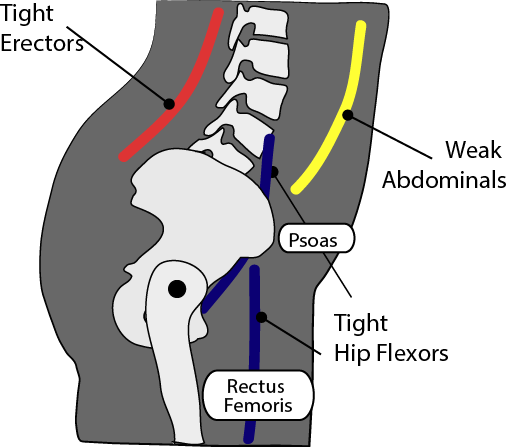Split Squat
The split squat is an essential exercise for assisting beginners to learn the correct receiving position for the Jerk. However, the exercise must be performed in a manner that is specific to weightlifting.
Coaching Points for the Split Squat
From an initial standing position with feet hip width apart, the athlete takes a long step forward (see “Learning Progression” below to determine which leg should go forwards).
In this position, feet split from front to back, the athlete must fix the shin of the leading leg so that it is completely vertical. This is one of the key coaching points of this exercise. Coaches should actively prevent the knee from going forwards from the vertical plane using their hand if necessary. The athlete must learn how it feels to maintain the front shin totally vertical throughout the exercise.
The rear foot position must be closely watched by the coach or others. The heel should be well raised from the floor throughout. Furthermore the foot should be straight and remain completely stable i.e. the heel does not lower to the ground.
This exercise is very much about training the rear leg. The object is for the athlete to learn to bend, and keep bent, their rear leg in the receiving position for the jerk. This has a major effect on the athlete’s ability to keep a neutral spine during the jerk (see “Rationale for Exercise” below).
What the beginner must develop
The split squat exercise assists the athlete to learn to:
- Accept a degree of bend in the knee of back leg in the split receiving position
- Strengthen the back leg to maintain a degree of bend in the knee
- Strengthen postural muscles to keep a neutral pelvis
- Keep the front shin vertical in the split receiving position
- Attain an even distribution of weight on both feet
Rationale for the Split Squat
It is unfortunately common to see weightlifters with significant deficiencies in the jerk receiving position. The Jerk receiving position is not easily mastered and for many, problems tend to be ongoing throughout the lifting career.
Of particular concern, athletes can easily acquire a “straight back leg” receiving position and, as a result, a problematic tilt of the pelvis caused by tight hip flexors. This pelvic tilt is problematic because it increases the lordotic curve of the lumber region of the spine. Any abnormal curvature of the spine increases the risk of injury.
Moreover, the “straight back leg” receiving position in the jerk is often accompanied by a forward lean of the trunk and a greatly uneven distribution of weight on the feet. As a result, the athlete will suffer instability as the weight will move towards the front of the base and will likely continue moving forward. In Figure 2 above right, the stripes on the athlete’s uniform provide an excellent guide to the degree of pelvic tilt, and lumber curvature. You can see that there is a significant change in angle between the upper and lower torso.
Important muscle and flexibility development
The issue for weightlifters in the jerk receiving position is that the movement backwards of the rear leg causes a rotation of the pelvis forwards. This rotation can be minimised by increasingly flexibility of hip flexors (ilio-psoas, pectineus, rectus femoris and others) and strengthening abdominals (see Figure 3).

Learning Progression for the Split Squat
Beginners need to determine which foot goes forward and which foot goes backwards in the split position. Methods to determine this question include:
- Athlete determines – the athlete is encouraged to try both ways and see which way feels right to them
- Coach determines – the coach asks the athlete to try both ways and makes an assessment of which way looks to provide best position for the athlete
- Coach endeavours to assess which foot ‘naturally’ goes forward by asking the lifter to jump into a split position without consciously making a decision about which foot goes forward.
- Coach endeavours to assess which foot ‘naturally’ goes forward by giving the athlete a push in the back and seeing which leg they step forward to steady themselves.
Every coach has his/her own way of determining the ‘natural foot’ but consideration should be given to the argument that it is the rear leg that needs to be strongest. The rear leg has the most difficult position to attain.
After a beginner has experienced a good measure of success with the Split Squat, the next progression could be the Jerk Balance exercise.
Training Methodology
Split squats, in Weightlifting, are mostly used for teaching skill or for remedial purposes i.e. correcting issues in the jerk receiving position.
This exercise should form part of the initial training regimen of the beginner and therefore it does not make sense to set the training intensity of this exercise as a percentage of 1RM. Instead, weights should be strictly limited to enable the beginner to focus on achieving excellence of position.
Generally this exercise is performed in sets of 5 repetitions, and a volume of 5-6 sets performed once or twice per week is as much time as can be afforded for beginners or persons with a problematic receiving position for the jerk.


